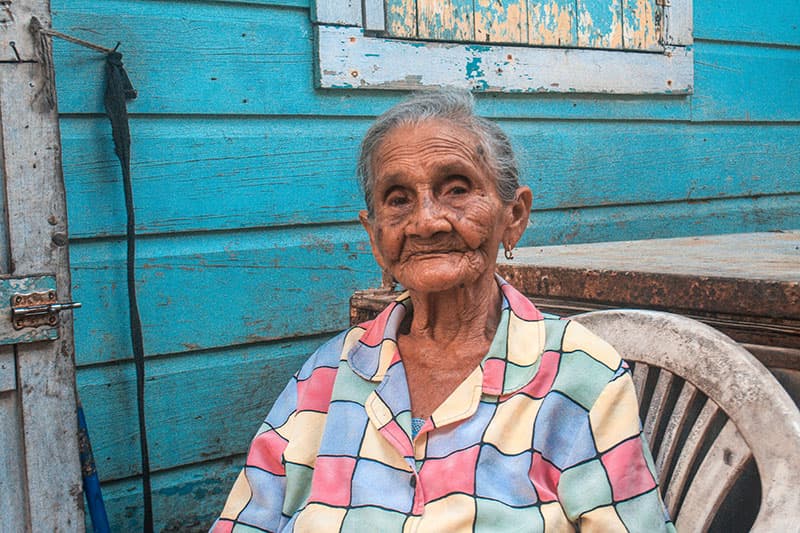
Beneath the photo were announcements for the time and place of the wake, the church service and the burial. Someone I had not seen in person or spoken to in more than a decade—but who figured prominently in my memory of what the Bay Islands were—was gone. In the following days, memories of the era when he and I moved in shrimping industry circles came to mind organically.
I returned from the United States to Roatan in the mid-1990s with my girlfriend, intending to live on the island for at least one year.
Within a week or two of arriving, we were able to rent a home on the eastern tip of a cay along Roatan’s south shore. On the day we moved in—having few belongings made this quick—we sat on the porch swing, feeling like we were finally settled into the house.
The first thing that enveloped us was a steady breeze coming off the grass bar. A sense of familiarity came over me—I was home. She sensed this satisfaction in me, and it pleased her. Before long, we saw a school of sprats, a gray mass against a large white area on the grass bar. The mass was eluding a barracuda that was on the hunt. The school of sprats seemed to feint the barracuda’s strikes as if it were a single being. After a time, the gray mass reached the channel and disappeared from our view.
Son sat on a wooden chair next to the open grave.
Yellow and red hibiscus flowers had opened along the narrow dirt paths of the cemetery grounds, with the leaves of the hibiscus plants still damp from overnight squalls. Gravestones—more recent ones fashioned by a stone worker from up The Point—stand sacred to the memory of islanders who passed long ago and more recently. A group of Black men, women and children from off The Hill had gathered for the funeral. Mr. Leonard stood tall among them—an uncommon sight, as he was without his wide-brimmed hat, left at home out of respect. While making their way along the paths to the freshly dug grave, the adults brushed the hibiscus leaves at their hips and thighs, the children at their shoulders and torsos. Their clothing was damp in those areas.
The deceased’s adult son sat on a wooden chair next to the open grave, with two lengths of strong rope with frayed ends curled at his feet. He was silent, his face streaked with tears as he watched his mother’s simple, unpainted pine casket. It was placed on top of a varnished mahogany table. Standing near the trunk of the trumpet tree, under whose branches the woman would be laid to rest, a local pastor delivered the sermon.
“Friends, we must tend to our many-colored garden in our dedication to our Christian will and our belief in God Almighty,” he began.






